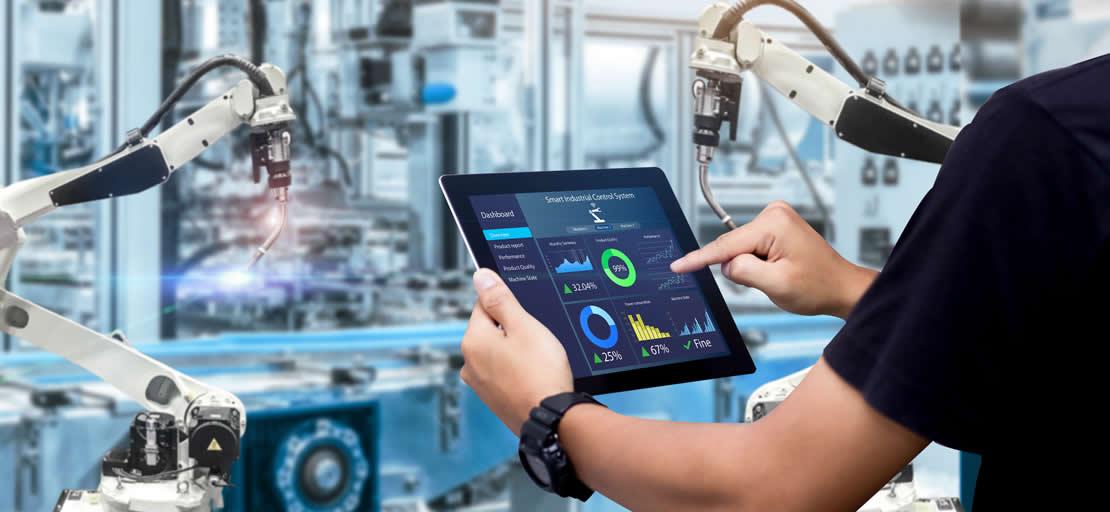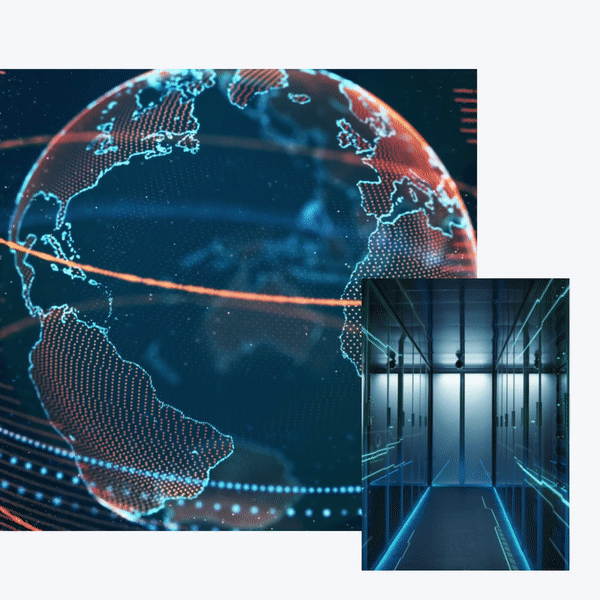INDEX
Introduction
Part 1:
Role of ERP in Business
Evolution of ERP
Increased Functionality
Access to Information
Part 2:
Web Enabled
C-commerce
New Industries
Advanced ERP
Part 3:
Best Practices
Multiple Vendors
Core Strength
Redefining Business Process
Assessment
Part 4:
Trends in ERP
New Markets
New Channels
Fast Implementation of Methodologies
Part 5:
Customisation Tools
Business Models and BAPI
Reduced Implementation Time
Wireless, Web-enabled,and Open-Source Technologies
Application Integration
Part 6:
Advantages of ERP
Benefits of ERP
Postmodern ERP
ERP stands for Enterprise Resource Planning. It is software that companies use to manage and integrate different parts of their businesses, especially data. The storage, management, and usage of data enable companies to make the right decisions.
A company consists of different groups, departments, and staff. None uses the same software. For example, the project management staff use the software developed for project management, while the sales staff use CRM software. The ERP software is specially designed to meet the organisational needs for resource planning.
Role of ERP in Business
The role of ERP is to provide a platform where everyone can use all the data. Each department may use its software; however, each software stores and uses the data from a central platform which is ERP. The advantage of ERP is that it contains a tremendous amount of information including capacity for production, purchase orders, business commitments, raw materials, payroll, etc.
Evolution of ERP
 |
Till 2005, ERP solutions were mainly facilitating the manufacturing process. The objective to use ERP then was to introduce automation in multiple units. Organisations were successfully using ERP in departments like distribution, order entry, inventory, and raw materials. However, departments like services, marketing, and sales did not use ERP. There were no ERP solutions for non-transactional relationships with vendors and external partners. Similarly, non-order operations and non-inventory issues were functioning without automation.
By 2005, ERP was not involved in customer relationship management that allowed an organisation to capture desired information of customers. It also did not work with portals or websites for order fulfilment or customer service. Quality assurance staff and call centre staff had no ERP solutions for their work. They had to do essential tasks like document management manually. Just imagine there was no cataloguing of purchase orders and contracts.
|
Increased Functionality
ERP was limited to generic tasks such as scheduling, logistics, forecasting, warehousing, E-commerce, and capacity planning. Changes took place after 2005 when ERP became more involved in specialised tasks such as project management, knowledge management, workflow management, customer relationship management, human resource management, portal capability, integrated financials, Internet, and online integration.
The evolution of ERP since 2005 started to increase.
ERP was limited to generic tasks such as scheduling, logistics, forecasting, warehousing, E-commerce, and capacity planning. Changes took place after 2005 when ERP became more involved in specialised tasks such as project management, knowledge management, workflow management, customer relationship management, human resource management, portal capability, integrated financials, Internet, and online integration.
ERP also manages access to information. It establishes security ratings and roles that define what type of information an employee can access. The system also addresses the issue of offices located at different locations through a web-based solution. It is convenient for the employee because they can access information from anywhere.
Over time, more businesses are using the Internet. It is not just a tool for web research, sending and receiving emails, and online transactions but has gradually evolved to make your business global by connecting your organisation with employees, customers, and suppliers.
Web Enabled
|
ERP with a web enabled B2B system can go far beyond the boundaries of an enterprise. It can integrate with business intelligence for better data analysis. Your ERP can also be coupled with the CRM system, increasing your involvement with your suppliers and customers. Many enterprises have already implemented this type of cross-functional change in their system.
People question why ERP has evolved so much over the last 15 years. The answer is the demand for more sophisticated processing capabilities that give the edge to enterprises over competitors. Many companies are always finding ways to extend and improve their processes. The aim is to develop integrated processing that customers, trading partners, and suppliers can access anytime. It is how companies develop self-service functionality. It is a unique concept that makes processes more effective, efficient and reduces the cost.
|
 |
C-commerce
ERP is also credited with the development of C-commerce (collaborative commerce). The concept of C-commerce is the electronic interaction of businesses. It enables enterprises to interact within the industry or supply chain. Today, the boundaries of your enterprise are no longer limited to your organisation. Now your enterprise is extended to your suppliers and customers.
The evolution of ERP has enabled companies, suppliers, vendors, and customers to work simultaneously due to the designed-to-integrate architectures and web-centricity of the system
ERP facilitated access to the Internet as it evolved over the years. Today, the Internet is a part of the work system. In the beginning, ERP was like an Internet-friendly application because it had limited use of the Internet. It was more like support than an integrated system. In other words, companies had processing technology but were not using it since experts then did not recommend its frequent use with the Internet. The evolution of ERP made it an Internet-friendly application.
C-commerce also allows your company to find a new partner that would solve your design problems.
C-commerce is an excellent development of ERP. It enables business partners from different companies to exchange information through C-commerce exchanges. For example, your company wants to develop a new product and share data with suppliers on different marketplaces C-commerce will enable data sharing with suppliers across online marketplaces. C-commerce also allows your company to find a new partner that would solve your design problems.
An organisation's competitive edge is its ability to share good information on the Internet for collaboration achieve better results. The evolution of ERP has helped it to cut across different business processes, especially customer relationship management, besides traditional functions like human resource management and finance.
New Industries

ERP is no longer limited to specific sectors such as distribution, manufacturing, and finance. Today, it applies to all industries. Buying and selling over the Internet is a part of ERP. Business interaction is the main focus now. Companies want to know what your main focus is and who you are working with currently. In other words, there is substantial intellectual capital out there for you.
Due to ever-increasing competition, businesses must now adopt an expansive approach to ERP to compete on a functional level. Such an ERP must utilise the web and connect to every part of the value chain. It can happen when an organisation is willing to change its procedures and internal processes to foster collaboration efforts inside and outside your organisation. Your organisation will need to integrate technologies that allow collaboration effects to take up the challenge.
It is never easy to change the internal processes of your organisation. However, corporations need to abandon old methods of protecting and preserving data. It can allow data sharing within an organisation and should be based on rules and roles. The reporting structure needs to be changed, and few people should not be doing decision-making. Communication and collaboration within the organisation and outside the organisation should be open. There should be more communication with customers, suppliers, and partners.
Advanced ERP
An advanced ERP system consists of disparate software packages that integrate the system seamlessly and transparently. There is one interface that loads information from different systems. It allows you to modify and save it back into the system. One action can trigger multiple events in multiple business systems. It further results in a chain of events throughout the value chain and across the enterprise.
This approach is helpful for companies to see where different processes intersect and impact each other.
Traditional ERP capabilities are connected with front-office processes with the help of software. It helps companies to unify knowledge, processes, and people. Linking advanced tools that run a business with traditional ERP enables customers to create an accurate and real-time view of the extended enterprise, thus, enhancing the company's management, planning, analysis, and decision-making. This approach is helpful for companies to see where different processes intersect and impact each other, and how workflow bring out a clear picture of your business. It leads to operational efficiencies and cost savings.
ERP solutions provide organisations with the ability to bridge the gap between the back and front-office operations. It also provides designated individuals with easy access to information that is helpful to their job role through a web-based interface resulting in a competitive advantage.
Enterprise solutions create an environment in which your company can effectively perform various tasks. ERP helps you model and effectively streamline workflow. It also enables you to automate and secure processes in a centralised environment. Access to documents and information must be based on the rules and roles of the workforce. It gives business managers the ability to control data access for both outside managed operations and projects. The managers can provide data access to staff based on the requirements with the help of an ERP system. It is an example of rules and roles-based approach which eliminates the issue of data islands. The model allows necessary involvement of stakeholders outside the organisation, and it is done with the help of portals.
ERP solutions allow the inclusion of all elements of the value chain in the processes. Advanced ERP solutions require integrating the Internet with powerful workflow components. In other words, each member of the value chain gets a process-centric view of the business. Workflow does not mean a model where you only send emails. Instead, it is a business rules system that automates the flow of tasks and communication ensuring that assigned tasks are completed or elevated. The ERP updates workflow processes from time to time as changes are needed.
Best Practices
Companies that benefited the most from ERP evolution were the ones that quickly adopted the best practices. Choosing and using the best business practices is challenging for managers, but business success depends on it. Managers consider multiple elements to ensure they choose the best practices that suit their companies. Staying up to date about ERP helps one make correct business decisions.
Multiple Vendors
ERP evolution has taught businesses that it is best to have many vendors for your business. One reason for it is that ERP enables companies to handle multiple tasks at the same time. Not all vendors are the same. Some of them are specialised in one industry while others are better in others. Each vendor has its specialty and using them correctly gives you an edge over competitors. ERP enables companies to mix and match different combinations; therefore, it is wise to select the best variety of vendors that specialise in various niches.
Core Strength
The evolution of ERP has helped businesses to meet deficiencies in their processes. The old practices did not exploit core strengths as much as new ones. Moreover, new solutions keep coming out from time to time, increasing productivity and efficiency. Additional work and new locations for business expansion should be the stress for managers.
Redefining Business Process
Companies go through restructuring their processes to redefine their business. The aim of redefining the industry is to enable yourself to perform a task that you could not do in the past. New processes need to replace old methods to do so. Only the advanced procedures become compatible with ERP. A time comes when businesses have only two options, either they modify their business or the ERP solutions. The evolution of ERP has made it easy to alter the business of a company. It can change the company's fate to a great level.
Assessment
Companies need to monitor the pace of ERP from time to time. It is helpful in many ways as it gives them an idea of the overall improvement in the business. Another advantage is that it helps companies to reduce or remove mistakes. The periodic assessment enables a company to understand the advantage from ERP. Time to time evaluation is the best way to implement ERP solutions that leads to success and avoid failures.
Trends in ERP
 |
We live in a world of technological innovation where survival depends on constant change. It is why the evolution of ERP has helped many enterprises achieve business success and avoid failure. Every organisation is different, and it has specific requirements and needs. Therefore, vendors should understand and offer customised products to companies. It is how they can survive in today's market when conditions change. The focus of ERP evolution is to achieve a system that can track and monitor all business functions, this is the reason why ERP vendors integrate new applications and add new features to products to provide organisations with a one-stop application. However, many challenges are a hurdle to achieve this perfection.
|
New Markets
Large enterprises are becoming saturated with new generation ERP systems. ERP vendors now have to look for new markets to continue their growth, causing them to become appealing to small business clients. The ERP vendors are now taking different initiatives to gain the attention of small businesses.
Following are some of the most popular initiatives taken by ERP vendors for small businesses: 1. Using platforms like Microsoft Windows for porting the products. 2. Faster deployment by improving the implementation methodologies. 3. Reduced functionality of software to stratify their offers. 4. Increase financial viability by lowering the entry price of the software. 5. Introduction of reseller channels to supplement direct sales.
New Channels
Top ERP vendors like Tentacle Solutions are developing new channels that are considered reseller channels. This development targets smaller businesses inside and outside the USA to provide one-stop shopping for ERP solutions. The entry price point of ERP software is low to make it attractive for small businesses. Moreover, there are more options of pricing depends on the user license.
Fast Implementation of Methodologies
A significant focus of ERP evolution was the faster implementation of methodologies. All ERP vendors faced the criticism that their software is costly and challenging to implement. Consulting firms took advantage of the situation and generated billions in fees for implementing ERP software practices. As a result, businesses believe that it is challenging to implement ERP packages.
|
There are several modules of an ERP system developed, so users from different business departments can use them. The infrastructure changed from mainframe to Windows platform, and several businesses processes went through re-engineering. Due to this change, ERP vendors shifted their focus on the ease of implementation and now focus more on effective methodologies and tools for speeding up processes. The new methods create special consulting teams to increase resources whenever needed, and the model-based approach opens up the system for easy integration.
|
 |
|
ThunderBolt is a prime example of an ERP system developed and extensively tested by Tentacle solutions to meet industry standards. ThunderBolt is different from its competitors, such as SaaS, because it allows each client to customise the platform as per their operational needs. Additionally, the client will own the data and code and host it on their server. Tentacle Solutions focuses on developing easy-to-use platforms with lower implementation time. FastForward is a similar program by Oracle. It helps to speed up the implementation of Oracle Applications suites and reduces the upfront costs.
With the evolution of ERP, new channel partners and best implementation practices are available.
With the evolution of ERP, new channel partners and best implementation practices are available. Still, ERP systems are difficult to implement in many cases due to a shortage of skilled consulting resources. Therefore, ERP vendors like Tentacle Solutions are taking initiatives to create consulting services to train teams of highly skilled experts to develop thoroughly trained and experienced consultants worldwide to ensure faster implementation of ERP solutions.
ERP implementation has one hidden cost: customisation. All ERP implementations need some customisation. The problem is that consulting firms will charge you a considerable amount of money for these efforts. Your ERP implementation budget gets a significant impact due to customisation efforts by consulting firms. ERP vendors have come up with a solution to this problem to lower the customisation cost by providing you with customisation tool kits when you purchase their products.
Business Models and BAPI
BAPI stands for business application programming interface, and it is a standard interface through which customer code and third-party applications interact with the products of the ERP vendor. Suppose your company is using LiveModel, which is a product of Intellicorp Inc, your implementation teams can use BAPI to review and simulate changes that provide views of data models, processes, and functions. Any changes your team made and the reference model is stored in the LiveModel and can be changed or audited whenever needed. Moreover, LiveModel is OLE compliant, meaning you can manipulate and document the model through a desktop OLE application like Microsoft Word.
Reduced Implementation Time
Many companies discourage ERP because of implementation time. No company likes it when it takes longer to install and set the whole process into action. It consumes many resources, and the company loses person-hours and potential business. The good news is that Thunderbolt has made applications less complicated and easy to train resulting in less time on ERP implementation. Therefore, companies are more attracted to ERP due to the reduction in the implementation time.
Wireless, Web-enabled, and Open-Source Technologies
The evolution of ERP has a solid link to elements like open-source, web-enabled, and wireless technologies. Open-source has solved the problem of paying the license fees. You don't have to pay for anything during installation or modification. A company is relieved when it no longer needs to pay the fee for minor matters.
Web-enabled ERP is awesome because it makes your company's operations go online.
Web-enabled ERP is awesome because it makes your company's operation go online. It enables your stakeholders or third-party to access the required information from anywhere. It is beneficial, especially during an emergency when people need details on an urgent basis.
Wireless ERP allows companies can use communication channels efficiently and effectively . Many elements can operate in ERP due to wireless systems, unlike in the past. You can use it to share information about your enterprise through the Internet and other devices to outsiders.
Application Integration
Many ERP vendors now offer applications like analysis and reporting, business intelligence, customer relationship management, supply chain management, etc. Sometimes these applications are not a part of ERP software. In that case, your ERP software is provided with features and capabilities to integrate with the applications. Your company will experience improved productivity and substantial cost savings due to the integration of the supply chain. ThunderBolt Business Suite allows your business to grow on your terms by streamlining your operations into one application. You can scale your current systems or upgrade and improve your technology. ThunderBolt by Tentacle Solutions has an integrated environment of business applications and modules for every workflow and business process a company needs.
Advantages of ERP
The evolution of ERP has resulted in many advantages for the end-users. The advantage of ERP is that the integration of business processes saves time and money. It enables the management to make error-free decisions in less time. Many tasks benefit from the business process integration. Sales forecasting becomes much more manageable, allowing the company to optimise its inventory. The data compilation of each area of operations archives the chronological history of every transaction. You can track orders from acceptance to fulfilment. You are also able to track the entire revenue from invoices through cash receipts. You can match purchase orders, inventory receipts, and costs. Purchase orders mean ordered items, inventory receipts mean what arrived, and the vendor invoiced price.
 |
ERP evolution created a system where centralised data makes tasks easy for you. You no longer need to synchronise changes between different systems as it provides a combined approach for manufacturing applications, human resources, sales, marketing, and finance. Your statistical data is transparent and legitimate. It becomes convenient to proceed with standard product coding and naming. You can get a comprehensive view of your enterprise. There is no problem with islands of information. The management can have real-time information anywhere at any time, which is crucial in decision-making. It creates a single structure of multiple security systems that protects your sensitive data.
|
Benefits of ERP
Today, ERP lets you create a more agile company that is much better at adapting to changes. It has a less rigid structure and more flexible processes. The organisation components work together to enhance business processes inside and outside the organisation.
Data security is essential for an organisation, and ERP makes your data secure in a closed environment. ERP systems provide you with a central control system to ensure your company data is protected. Depending on circumstances, you will need to scrutinise your security features and company policies.
ERP solutions provide you with more opportunities for collaboration.
ERP solutions provide you with more opportunities for collaboration. Your data exists in many forms such as emails, video, audio, forms, etc. Different types of data have other mechanisms for collaboration. ERP is a collaborative platform where your employee can learn to communicate in different systems.
|
Standardisation of shared processes, access to data, improved key performance indicators, standardised reporting, and an integrated system are other opportunities that ERP provides to enterprises. Many organisations misinterpret the concept of an integrated system which is a crucial benefit of ERP. Companies need to understand that ERP is a centralised system that integrates their significant functions such as finance, analytics, customer relations, sales, procurement, planning, human resources, and other application functions. In other words, ERP is your centralised, integrated enterprise system.
|
 |
|
Postmodern ERP
The idea of postmodern ERP is that a core ERP solution covers all critical business functions, and specialist software solutions cover other functions. All business applications are loosely connected and easily interchangeable. There is no hard and fast rule that says what business functions are part of core ERP and what business functions are supplementary. Every company needs to define its ERP strategy based on processes, operations, and internal and external needs. For example, your company states that core ERP solutions are those business processes behind the firewall, and it helps you decide that your core ERP will remain on-premises. Now another company makes the opposite move by choosing to host core ERP solutions in the cloud, and only supplementary solutions stay on-premises.
ERP will continue to evolve because it provides solutions and strategies that add speed and flexibility to businesses processes. ERP solutions loosely connect business applications which makes it easy to upgrade or replace them. Moreover, companies can use on-premises and cloud-based solutions that suit their needs.